Understanding Car Paint Job Pricing: A Detailed Guide
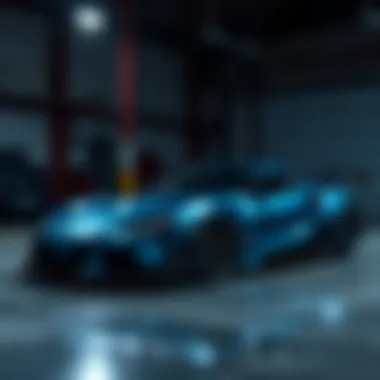
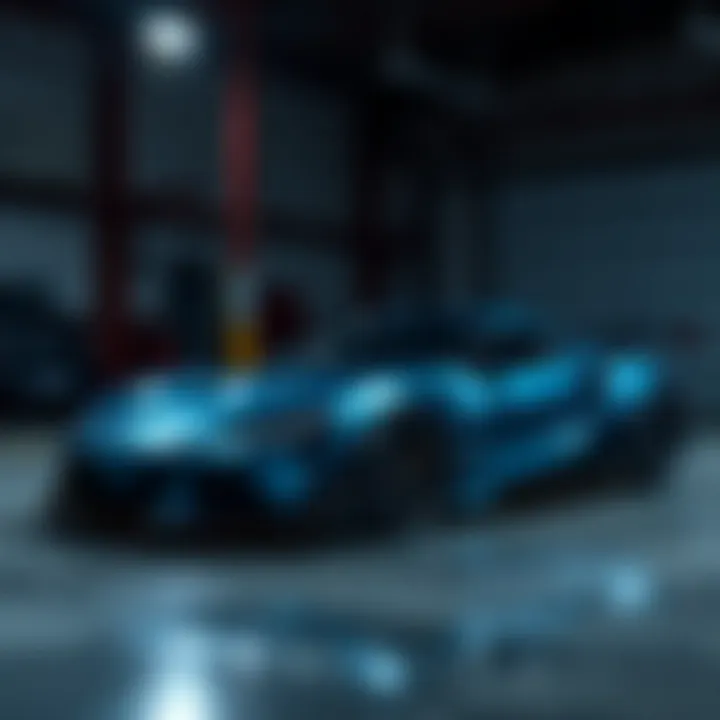
Intro
When it comes to giving your vehicle a fresh new look, understanding the pricing Dynamics of car paint jobs is crucial. Not only does the outward expression of your car reflect your style, but it also ties into improving its overall aesthetic and even resale value. Navigating the myriad of factors influencing prices can feel like trying to find a needle in a haystack; however, by breaking it down, it becomes much more manageable.
In this guide, we will delve into several key areas that impact the expense associated with painting your car. From the type of vehicle you own to the quality of paint selected, labor considerations, and even how your location can influence costs, we will cover everything you need to know.
By the end, you’ll not only know what to expect when it comes to budgeting for your paint job, but you'll also grasp the importance of selecting a reputable service provider that won’t cut corners. This guide aims to arm automotive enthusiasts and potential clients with insights that will prove invaluable when deciding on a paint job for their cherished vehicles.
Understanding Car Paint Job Pricing
When it comes to giving your vehicle a fresh look or simply maintaining its aesthetic appeal, understanding car paint job pricing is a crucial aspect. Knowing how much you might expect to spend can save you from unexpected expenses down the road. This understanding can also arm you with valuable information when it comes to choosing the right service provider.
Defining the Scope of Car Paint Jobs
Car paint jobs are more than just a splash of color on an aging vehicle. They encompass a wide range of services that vary in complexity and cost.
- Full Resprays: This involves painting the entire vehicle and is typically the most costly option. It's ideal for those looking to change their car's color or restore a vintage model.
- Touch-ups: These jobs are generally less expensive and involve cosmetic fixes to areas of the car that have seen scratches or chips. They're great for maintaining a car's overall appearance without breaking the bank.
- Custom Paint Jobs: For those wanting something truly unique, custom designs can be created. Of course, price points can vary greatly based on the complexity of the design.
Understanding what type of paint job you're looking for can directly influence pricing. Each type has its own set of necessary materials and labor intensity involved.
Typical Cost Ranges for Paint Jobs
To break it down succinctly, here’s what one might typically expect:
- Full Car Respray: Prices can range from $2,500 to over $10,000, depending largely on the quality of the paint and the specifics of the job.
- Touch-ups and Repairs: These can be as inexpensive as $100 for minor scratches, but can also escalate to $1,000 or more for larger repairs that may require significant blending with the surrounding areas of paint.
- Custom Paint Jobs: These are highly variable but can start around $2,000 and quickly soar past $8,000, especially for complex designs requiring multiple techniques such as airbrushing.
A careful consideration of your goals will aid in narrowing down your options, ultimately leading to a more informed decision when selecting a paint job that fits your budget.
Understanding these typical ranges and their definitions allows you to prepare financially, making you a more savvy consumer. With this foundation, we can now delve into the various factors influencing paint job costs, allowing you to discern not just why but how those dollar amounts come into play during a paint service.
Factors Influencing Paint Job Costs
When considering a car paint job, understanding the factors that influence pricing is paramount. The decisions you make regarding your vehicle's appearance can impact both your wallet and the outcome. Pricing fluctuates based on multiple elements, and it's crucial to comprehend how each factor plays its part. Here, we break down significant considerations to help you navigate the often murky waters of car paint job costs.
Type of Vehicle
The cost of painting a vehicle can swing wildly depending on the type and model. For instance, it’s generally agreed that larger vehicles like SUVs or trucks will typically come with a heftier price tag than compact cars. This is intrinsic to the increased surface area needing coverage, which translates into more paint and labor hours.
Moreover, luxury cars or high-end models often demand a higher price due to specialized paint and expert technique required in handling them. For example, a premium brand like Mercedes-Benz might have particular color finishes that are not just exclusive but also pricier than standard colors found on your average Honda.
Additionally, modifications like spoilers, custom bumpers, or other add-ons can elevate the final cost significantly. Keep in mind:
- SUVs and trucks may cost upwards of $5,000 for a full respray.
- Luxury and exotic vehicles can push the price even higher, reaching beyond $10,000 depending on the complexity.
Quality of Paint Used
Paint quality is another critical piece of the pricing puzzle. Not all paints are born equal; they vary in quality, durability, and price.
Typically, professional-grade automotive paints incorporate advanced formulas designed to withstand the elements better, leading to fewer repairs down the line. High-quality paints can cost significantly more, but they often offer better protection and longer-lasting results. For instance, a standard enamel might cost you around $500, whereas a high-end urethane could run you upwards of $2,000. Think about it like this:
- Budget paint (say, for quick fixes) can save money initially.
- Premium options may require a larger upfront investment, but they provide longevity and aesthetic benefits.
Quality goes beyond just the initial application; a good paint job will stay vibrant and intact for years, reducing the chances of needing a recoat sooner than expected.
Complexity of the Job
The complexity of the job is often the real wild card when it comes to pricing. A straightforward single-color repaint is one thing, but add several layers, intricate designs, or special effects like metallic or pearlescent finishes, and the costs can skyrocket.
For example, a full car respray in a single solid color can be much less expensive than a custom job featuring graphics or two-tone effects. Additionally, if considerable work is needed on the vehicle’s surface to correct imperfections like rust or dents, the labor cost can pile up. Here’s what to consider:
- Simple respray: Generally around $2,000-$4,000.
- Custom designs or multi-color jobs can stretch the budget to $7,000 or more.
- Surface prep work, as annoying as it may be, is imperative to ensure a flawless finish.
"The art of car painting is not just about the color, but mastering the preparation and complexity behind it."


Understanding these elements provides clarity into what you might expect to pay for a paint job. Being aware of how the type of vehicle, the quality of materials used, and the complexity of the job can influence your final costs not only helps you set a budget but also empowers you to make informed decisions with confidence.
Labor Costs and Expertise
When delving into the pricing of car paint jobs, the labor costs represent a significant portion of the total expense. Understanding this aspect is crucial, as it directly correlates with the quality of work you can anticipate. A skilled technician can bring out the best in a paint job, ensuring not just a beautiful finish but also longevity and durability.
Labor costs can vary based on a multitude of factors. The expertise and experience of the technician play a vital role in defining the rates. Hence, potential clients need to consider the value that well-trained professionals bring to the table, as their expertise often saves money in the long run by avoiding mistakes or shortcuts. It’s not just about getting the job done; it’s about getting it done right.
Moreover, geographical location can heavily influence labor costs. For instance, hiring a technician in bustling urban areas often comes with a premium as opposed to those in rural regions. Understanding these nuances helps in budgeting appropriately and setting realistic expectations.
"Cutting corners on labor might save you a quick buck, but you could wind up regretting it when the paint starts to peel."
Understanding Labor Rates
Labor rates can differ widely across various regions and shops. In urban epicenters like Los Angeles or New York, you might find rates soaring due to higher overheads and demand. However, in smaller towns, these costs may be significantly lower.
Here’s a quick breakdown of typical labor rates:
- Urban Areas: $70 - $120 per hour
- Suburban Areas: $50 - $90 per hour
- Rural Areas: $40 - $70 per hour
This discrepancy showcases how market dynamics operate. Factors like demand for services, technician availability, and local economic conditions all contribute to the final price tag. Also, shops with a solid reputation may charge higher rates for their skilled labor, which buyers often consider worth the investment.
Experience of Technicians
The experience level of the technician is paramount. A novice technician may offer a lower rate, but they also carry a higher risk of errors. Conversely, seasoned professionals not only deliver superior results but also adhere to best practices that enhance the durability of the paint job.
When assessing technicians, consider the following aspects:
- Years of Experience: More years generally translate to better craftsmanship.
- Industry Certifications: Certifications can indicate formal training and adherence to industry standards.
- Portfolio of Work: Review past projects to gauge the quality and style of work.
While experience can command a higher price, it often leads to fewer headaches down the road. Investing in a competent technician is wise if you desire a finish that stands the test of time. Being tigh with your budget may seem tempting but quality will often prevail in the long run.
Regional Price Variability
Understanding regional price variability in car paint jobs is crucial for potential clients, especially when navigating the vast landscape of automobile services. Prices can vary significantly based on geographic location due to factors such as local economic conditions, labor costs, and market demand. In this segment, we will explore how different regions influence paint job pricing and the implications for the consumer.
Urban vs. Rural Pricing
When comparing the costs of car paint jobs in urban settings versus rural areas, one could easily notice a distinct divide. Typically, urban locations may present higher prices due to increased operational costs for providers. These areas often have higher rent prices, taxes, and labor expenses. For instance, a full respray in downtown San Francisco might set you back more than a similar service in a rural town in Nebraska.
- Urban Areas:
- Rural Areas:
- Higher labor costs
- Increased overhead for businesses
- Greater demand and competition
- Availability of specialized services
- Generally lower costs
- Fewer specialized shops, limited choices
- Mainly general services available
- Prices can be more negotiable
Consumer awareness of these differences is key. A savvy shopper may benefit from looking outside city limits to find more competitive pricing, potentially saving a chunk of change while still receiving quality service.
Local Market Trends
Aside from urban versus rural distinctions, local trends play a major role in pricing. Depending on the area, certain types of paint jobs may be in higher demand or subject to fluctuations based on visual aesthetics or popular brands. For example, if a specific color or style becomes fashionable in a certain city, it’s likely the shops providing that style will raise prices due to increased demand.
"Understanding your local market isn’t just about looking for the best price; it’s about knowing who to trust and what services they offer."
It's wise to pay attention to several factors when gauging local trends:
- Seasonality:
- Vehicle Types:
- Competitor Presence:
- Certain seasons may see higher rates due to demand – like summer or prior to big events.
- Some areas gravitate towards larger trucks or luxury cars, shaping the kinds of services offered and their pricing.
- A saturation of service providers might lead to competitive pricing, while fewer options could lead to higher costs.
Common Types of Paint Jobs
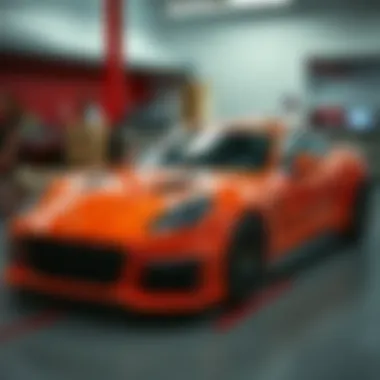

When it comes to car paint jobs, understanding the different varieties is crucial. Each type not only offers varying aesthetics but also serves distinct purposes that can significantly impact pricing. Here, we will break down the common types of paint jobs, shedding light on their unique characteristics, benefits, and considerations.
Full Car Resprays
A full car respray involves completely repainting the entire car, which can breathe new life into an aging vehicle or help restore its original charm. This type of job is popular among car enthusiasts looking to customize their vehicles or among owners of older cars showing signs of wear and tear.
The cost of a full respray can be influenced by several factors:
- Quality of Paint: High-end automotive paint can improve the gloss and durability, but it comes at a premium cost.
- Prepping: Proper surface preparation is essential before applying new paint. Any rust, dents, or scratches need fixing, which can add to the labor costs.
- Labor: Skilled technicians are required for a flawless finish, and labor rates can vary vastly depending on the region.
In short, a full respray tends to be on the pricier side but pays off in quality and durability over time.
Touch-Ups and Repairs
Touch-ups and repairs are generally less costly than a full respray, primarily focusing on specific areas that need attention. Whether it’s a scratch from a rogue shopping cart or a small dent due to hail, touch-up jobs are quick fixes that can save money and extend the life of the vehicle’s paint.
These jobs are valuable for several reasons:
- Cost-Effective: Often, touch-up paints are readily available, and the labor required is minimal, making it an easy option.
- Quick Turnaround: Since they deal with specific areas, these repairs usually require less time compared to extensive jobs.
- Preservation: Addressing these smaller issues promptly prevents further damage that could lead to rust or more extensive repairs down the road.
Yet, the effectiveness of touch-ups depends heavily on the technician's skill and the paint match's accuracy; thus, quality assurance remains key.
Custom Paint Jobs
Custom paint jobs are where creativity meets automobile artistry. They are designed according to personal taste and can include anything from unique color combinations to intricate designs and airbrushed details. This style is especially appealing for those who wish to make a statement or stand out in the crowd.
Considering a custom paint job comes with its own set of factors:
- Design Complexity: The more intricate the design, the higher the labor costs. Algo, custom patterns generally require skilled artists.
- Materials: Specialty paints, which can include pearlescent or metallic finishes, incur additional costs.
- Timeframe: These jobs can take significant time to achieve the desired look, which translates into higher labor costs.
To sum it up, while custom paint jobs can be on the expensive side, they offer a form of personalization that can add great value and character to a vehicle.
In summary, choosing the type of paint job involves considering both budget and long-term value. Make sure to discuss options thoroughly with your service provider to ensure the best outcome.
For more in-depth guides on car repairs and paints, refer to sources like Wikipedia or check out community insights on Reddit.
Materials and Their Costs
Understanding the materials used for car paint jobs is crucial for potential clients and automotive enthusiasts alike. The right materials not only impacts the overall cost but also influences the durability, aesthetic appeal, and final quality of the paint job. Different types of paints, primers, and clear coats all come with distinct price tags, which can vary greatly based on their properties and composition. For anyone considering a repaint, acknowledging these variances can save time and money, as well as deliver better outcomes.
Types of Paint Products
When it comes to car paints, there are several distinct categories available, each offering unique benefits and potential drawbacks. Here are some of the standard paint products often used:
- Acrylic Paint: Known for its vibrant colors and fast drying time, acrylics are a popular choice. They are usually easy to work with but might require a clear coat for extra protection.
- Enamel Paint: This type is generally more durable and resistant to chemicals and weather conditions. However, it often takes longer to dry, which can prolong the painting process.
- Urethane Paint: Offering a balance between durability and ease of use, urethane paints are favored by professionals. Their resilience often justifies the higher cost.
- Water-based Paints: Emerging as an eco-friendly alternative, these paints are less toxic and easier to clean. However, their durability can be a concern for certain applications.
Choosing the right type depends on several factors including the desired finish, vehicle usage, and environmental considerations. Higher-quality paints tend to come at a premium, but they often provide better longevity and aesthetics in the long run.
Impact of Paint Finish
The finish of the paint job can make or break the overall look of a vehicle. The finish refers to the sheen or glossiness of the paint once it has cured. There are a few prominent types of finishes:
- Gloss Finish: This is the most popular option, providing a shiny and reflective surface. It's visually striking but may show imperfections on the car surface more evidently.
- Matte Finish: For those looking for something sleek but not shiny, a matte finish offers a modern touch. However, it can be more challenging to maintain.
- Satin Finish: Somewhere between gloss and matte, satin finishes offer a subtle shine, making them versatile for various vehicle styles.
The chosen finish can also affect the labor involved in the paint job; for instance, achieving a high-gloss finish may require multiple layers and sanding in between applications. Therefore, it’s essential to strike a balance between aesthetic preferences and the cost implications of achieving that perfect finish.
"Investing in quality materials can significantly extend the lifespan of your paint job and enhance your vehicle's overall appeal."
By understanding the different types of paint products and how the finish affects the job, clients can make informed decisions that align with their expectations and budget. This knowledge lays a solid foundation for evaluating quotation from service providers, ensuring that what’s paid reflects the quality received.
For more insights on materials used in automotive paint jobs, you can visit Wikipedia on Paint or explore further discussions on Reddit.
The Importance of Preparation
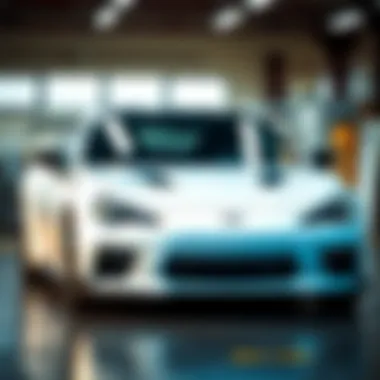
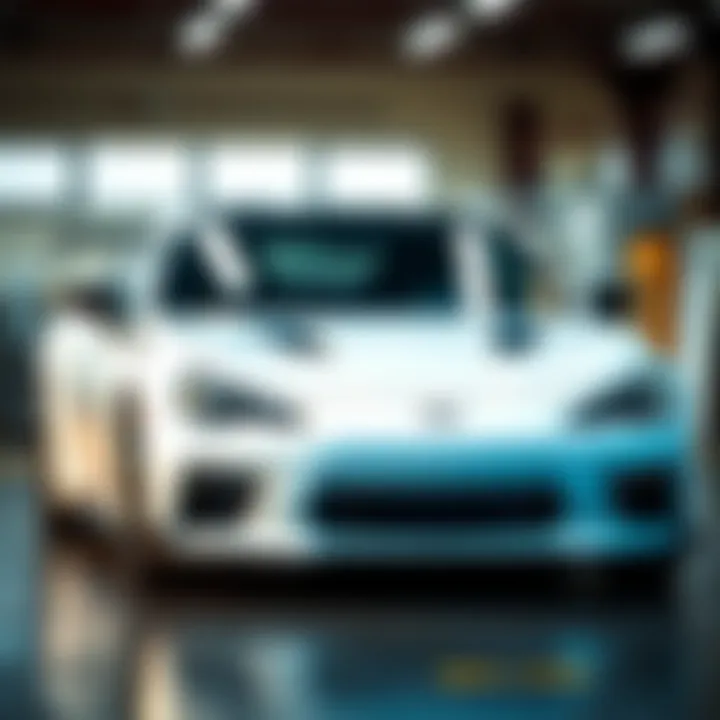
In the realm of car paint jobs, preparation is more than just a minor cog in the wheel; it's the foundation upon which a successful paint job is built. When embarking on the journey of transforming your vehicle's appearance, the preparation stage is where one really sets the stage for success. Without proper preparation, even the most expensive paint can lead to poor results, like bubbling or peeling down the road. This is a fact often underestimated by car owners. Investing time and effort during the preparatory stage will pay dividends in longevity and quality of the finished look.
Surface Preparation Process
The surface preparation process is often the unsung hero of a quality paint job. It involves multiple steps to ensure that the paint adheres properly and that the end result is as flawless as it can be. Here's a closer look at the essential components:
- Cleaning: The surface must be meticulously cleaned to remove dirt, grease, and any old wax. A dirty surface and paint do not mix, leading to compromised adhesion.
- Sanding: This step smoothens out imperfections. Sanding the surface not only creates a rough texture for the paint to grip but also helps remove any old paint remains.
- Repairing: Any dents, rust, or scratches must be handled before painting. Using body filler to patch these up can save you from a blemished paint finish.
- Masking: Areas not to be painted need masking with tape or paper to avoid overspray. This step is crucial for achieving sharp lines and a clean look.
- Priming: Finally, applying a primer seals the surface and further enhances the paint’s bond. It's often a step that shouldn’t be skipped, especially for cars undergoing full resprays or touch-ups.
Proper preparation can take hours, even days, depending on the condition of the vehicle and the complexity of the job. However, this investment in time is essential.
Impact of Preparation on Pricing
The relationship between preparation and pricing is intricate. Ultimately, the more detail that goes into preparation, the higher the overall cost of the paint job. Consider these factors that contribute to the final price:
- Time Investment: The more labor-intensive the preparation, the more it adds to the cost. That being said, cutting corners can lead to poor results which could cost more in repairs later on.
- Skill Level: Experienced technicians charge more for their time, but they often do a better job of preparation. This can prevent costly mistakes down the line.
- Materials: Quality of cleaning agents, sandpapers, fillers, and primers also contribute to costs. Investing in high-quality materials enhances durability and finish.
- Complexity of Required Repairs: If extensive repair work is necessary, it will significantly inflate overall pricing.
"The effort and detail put into preparation can be the difference between a stunning paint job and a complete disaster."
It’s worth noting that while some DIY enthusiasts may see preparation as a way to save money, the pitfalls of inadequate prep can be expensive to rectify. Hence, understanding this dynamic between prep work and costs can set realistic expectations and help in making informed decisions related to car paint jobs.
Choosing the Right Service Provider
Getting a car paint job is not just about making your vehicle look pretty; it’s also about protecting your investment. Therefore, choosing the right service provider is crucial. The decision can significantly affect the quality and longevity of the paint job as well as how much you end up spending overall. With so many options out there, it’s easy to get lost in the weeds. Understanding how to evaluate providers is therefore more important than you think.
First off, a good service provider should not only have the right tools and paint products but also the necessary experience and expertise. A shop that specializes in car detailing and paint jobs may offer services that better align with your needs compared to a general auto body shop. They tend to know the ins and outs of what works best for different vehicles and paint types, which could give you a real edge in ensuring a high-quality job.
Moreover, reputation matters a great deal. You don’t want to find yourself stuck with a poorly executed job that leaves you wishing you hadn’t skimped on research. A simple look at online reviews can tell a lot. Sites like Reddit or local forums can provide real-life testimonials and experiences. Indeed, if you see too many negative comments in a row, it’s a pretty clear red flag.
Evaluating Experience and Portfolio
When it comes down to brass tacks, the experience of a service provider can often set the stage for success. But how do you gauge their experience? Asking questions is key. Find out how long they’ve been in the business. Curious about specific examples? Don’t hesitate to request to see a portfolio of past works. This gives you a visual representation of the kind of quality you can expect.
- Ask for images of completed jobs, not just stock photos.
- Consider visiting their workshop, if possible. A clean, organized space can indicate professionalism.
- Certifications or training programs completed by technicians can also add credibility.
It’s essential you look for variety. Different cars, paint colors, and styles showcased might just give you an insight into their versatility.
Understanding Warranty Offerings
Lastly, let’s discuss warranty offerings. It might be easy to overlook, but a warranty can be a significant factor when choosing a paint service. A good warranty doesn’t just reflect the confidence a provider has in their work; it also protects you. You’d want something that covers defects, peeling, or fading in your paint job.
- Duration of the Warranty: A longer warranty often shows a higher quality of work.
- What Is Covered: Are you protected against environmental factors, or just workmanship? Be clear on this.
- Claim Process: Understand how hassle-free this process is. You want to avoid red tape that makes it harder for you to get repairs.
In closing, choosing the right service provider for your car paint job is about gathering information, asking questions, and knowing what to look for. Assessing experience, checking past work, and understanding warranty offerings are all critical to helping you find a provider that meets your needs, leading to a satisfactory outcome that stands the test of time.
DIY vs. Professional Paint Jobs
When it comes to giving your vehicle a fresh look, the choice between a DIY paint job and hiring a professional is crucial. Both options come with their own sets of pros and cons that are important to weigh. Knowing what each path entails helps in making an informed decision, ultimately affecting satisfaction with the final product.
Analyzing Cost-Effectiveness
In terms of costs, DIY paint jobs often seem more wallet-friendly at first glance. After all, a few cans of paint, some brushes, and a decent spray gun may only set you back a couple hundred dollars. However, while saving money upfront appeals to many, the long-term costs can pile up quicker than you might expect.
For instance, if you decide to tackle the job yourself, you may need to invest in quality tools and materials. Spray guns, masking tape, primers, and finishes can add unexpected dollars to your initial budget. Furthermore, without prior experience, you may end up purchasing more than needed due to mistakes or redo situations. Taking the time to compare prices on professional services reveals that while the upfront cost may be higher, professionals often provide a quality that can save you money in future repairs and touch-ups due to initial errors in a DIY job.
If you’re considering labor costs, many professional painters offer a warranty on their work, something you won't get with DIY. This warranty can be seen as a safety net that absorbs future costs associated with repairs or rework.
Potential Pitfalls of DIY Painting
Taking the DIY route might make sense, but it comes with its own chunk of headaches. The most glaring limitation is often the lack of expertise. Sure, YouTube tutorials can offer guidance, but they can't replace hands-on experience. Without a solid grasp of paint application techniques, you may end up with drips, uneven finishes, or mismatched colors.
Moreover, the preparation phase, which is crucial for any paint job, can be quite the labor-intensive nightmare. A thorough sanding and cleaning process is essential before applying paint. Skimping on this can lead to paint peeling and surface irregularities that need to be corrected later on. A more seasoned professional knows this routine well and can execute it efficiently.
In addition to aesthetic considerations, there's the matter of tools and workspace. A garage may not always suffice for creating the ideal environment for painting without dust or contaminants. The risk of imperfections increases significantly in an uncontrolled setting. To compound matters, the paint fumes can be harmful; lack of proper ventilation could lead to health issues, or worse—legal repercussions if you’re painting in an unregulated environment.
More than just financial, time is another resource you could be wasting on these projects. A professional can generally complete a job quicker and with superior results than amateurs, thus saving both time and potential future costs from botched attempts.
Choosing to go DIY can be tempting, but all these elements make it essential to analyze whether the possible savings are worth the risk. In many cases, shelling out for a professional can prove more cost-effective in the long run, coupled with peace of mind.
In the end, weighing your skills, available time, and resources should guide your choice between DIY and hiring a professional. Each has unique advantages that can suit different needs and situations.
For those who may still want to give it a shot, having a plan, investing in quality materials, and practicing on a less visible area could offer a learning experience that pays off.







